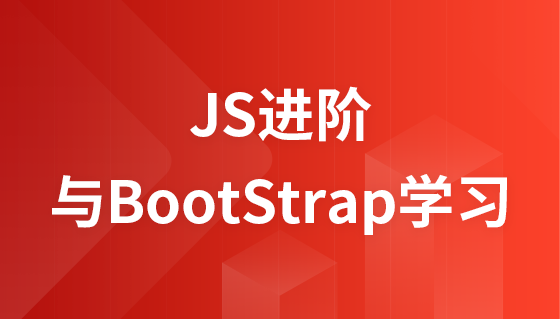
webrtc连接在手动交换offer/answer时,如果answer未在短时间内被接受,连接可能因ice超时而失败。这主要是因为webrtc的交互式连接建立(ice)机制会持续消耗资源并探测网络路径,长时间的等待会导致资源浪费和状态失效。优化方案包括采用实时、自动化的信令机制,并合理配置ice参数,避免不必要的资源消耗。
WebRTC(Web Real-Time Communication)允许浏览器之间进行实时通信,其核心在于建立对等连接(Peer Connection)。这个过程涉及信令(Signaling)和交互式连接建立(ICE)两大关键环节。信令负责交换会话描述协议(SDP)Offer/Answer以及ICE候选者(Candidates),而ICE则负责发现并建立实际的网络连接路径。当采用手动方式交换Offer/Answer时,开发者常会遇到连接超时或失败的问题,尤其是在Answer被接受的时间过长时。本文将深入探讨这一现象背后的原理,并提供相应的优化建议。
ICE(Interactive Connectivity Establishment)是WebRTC连接成功的基石,它主要解决NAT穿越和防火墙阻碍的问题。
在提供的代码示例中,开发者采用了手动交换Offer/Answer的方式。这种方式本身并非WebRTC的推荐用法,因为它引入了显著的延迟和复杂性。
针对提供的代码和问题描述,可以发现以下几点需要关注和优化:
为了避免因时序问题导致的连接失败,并优化WebRTC连接性能,建议遵循以下最佳实践:
实时交换ICE候选者: 这是最关键的一点。不应等待所有ICE候选者收集完毕再发送,而应在每个候选者生成时立即发送。这通过监听RTCPeerConnection的onicecandidate事件实现。当此事件触发时,表示一个新的ICE候选者已被发现,应立即通过信令服务器将其发送给对端。对端接收到候选者后,通过addIceCandidate方法将其添加到其RTCPeerConnection实例中。
// 在 createPeerConnection 方法中或之后
this.peerConnection.onicecandidate = (event) => {
if (event.candidate) {
// 将 event.candidate 发送给对端
// 例如:signalingServer.send({ type: 'candidate', candidate: event.candidate });
console.log('New ICE candidate:', event.candidate);
} else {
console.log('ICE gathering complete.');
}
};自动化信令服务器: 摒弃手动交换Offer/Answer的方式。使用WebSocket、Socket.IO或其他实时通信技术构建一个信令服务器。该服务器负责在两个PeerConnection之间转发SDP Offer/Answer和ICE候选者,确保信息的及时传递。
优化ICE配置:
以下是基于原始代码结构,展示如何集成onicecandidate事件监听的简化示例:
export default class P2P {
constructor() {
this.peerConnection;
this.dataChannel;
this.configuration = {
iceServers: [
{
urls: ['stun:stun4.l.google.com:19302']
}
],
// 移除或设置为0,避免资源浪费
// iceCandidatePoolSize: 0
};
};
createPeerConnection = async () => {
this.peerConnection = new RTCPeerConnection(this.configuration);
this.openDataChannel();
this.peerConnection.addEventListener('connectionstatechange', (e) => {
console.log('Connection state:', this.peerConnection.connectionState);
});
// 关键:实时发送ICE候选者
this.peerConnection.onicecandidate = (event) => {
if (event.candidate) {
// TODO: 将 event.candidate 通过信令服务器发送给对端
console.log('Generated ICE candidate:', event.candidate);
// 假设有一个 sendSignalingMessage 函数用于发送信令
// this.sendSignalingMessage({ type: 'candidate', candidate: event.candidate });
} else {
console.log('ICE gathering complete.');
}
};
this.peerConnection.oniceconnectionstatechange = () => {
console.log('ICE connection state:', this.peerConnection.iceConnectionState);
};
};
openDataChannel = () => {
let options = {
reliable: true
};
this.dataChannel = this.peerConnection.createDataChannel('test', options);
this.dataChannel.binaryType = "arraybuffer";
};
// 此方法在实时信令中不再需要等待ICE gathering complete
// ICE候选者通过 onicecandidate 事件实时发送
// getIceCandidates = () => { /* ... */ };
createOffer = async () => {
await this.createPeerConnection(); // 确保 PeerConnection 实例和 onicecandidate 已设置
let offer = await this.peerConnection.createOffer();
console.log("created-offer");
await this.peerConnection.setLocalDescription(offer);
// TODO: 将 offer.sdp 通过信令服务器发送给对端
// return JSON.stringify(this.peerConnection.localDescription);
return this.peerConnection.localDescription; // 直接返回RTCSessionDescription对象,方便后续处理
};
acceptOffer = async (offer) => {
await this.createPeerConnection(); // 确保 PeerConnection 实例和 onicecandidate 已设置
// offer 应该是 RTCSessionDescription 对象或其JSON表示
await this.peerConnection.setRemoteDescription(new RTCSessionDescription(offer));
};
createAnswer = async () => {
let answer = await this.peerConnection.createAnswer();
console.log("created-answer");
await this.peerConnection.setLocalDescription(answer);
// TODO: 将 answer.sdp 通过信令服务器发送给对端
// return JSON.stringify(this.peerConnection.localDescription);
return this.peerConnection.localDescription; // 直接返回RTCSessionDescription对象
};
acceptAnswer = async (answer) => {
// 确保 answer 是 RTCSessionDescription 对象或其JSON表示
// 这里不再需要 !this.peerConnection.currentRemoteDescription 判断,
// 因为 setRemoteDescription 应该只被调用一次
await this.peerConnection.setRemoteDescription(new RTCSessionDescription(answer));
console.log('Accepted answer');
};
// TODO: 添加一个方法来处理接收到的ICE候选者
addRemoteIceCandidate = async (candidate) => {
try {
await this.peerConnection.addIceCandidate(new RTCIceCandidate(candidate));
console.log('Added remote ICE candidate:', candidate);
} catch (e) {
console.error('Error adding received ICE candidate:', e);
}
};
};WebRTC连接建立是一个复杂而精妙的过程,对时序有着严格的要求。手动交换Offer/Answer的方式虽然在某些调试场景下可行,但极易因信令延迟而导致ICE连接超时失败。理解ICE机制的交互性和资源消耗特性,并采用实时、自动化的信令服务器来交换SDP和ICE候选者,是确保WebRTC连接稳定、高效建立的关键。同时,合理配置RTCPeerConnection的参数,特别是iceCandidatePoolSize,可以避免不必要的资源浪费,进一步优化连接性能。
以上就是WebRTC连接建立的时序敏感性:ICE与手动信令的挑战的详细内容,更多请关注php中文网其它相关文章!

每个人都需要一台速度更快、更稳定的 PC。随着时间的推移,垃圾文件、旧注册表数据和不必要的后台进程会占用资源并降低性能。幸运的是,许多工具可以让 Windows 保持平稳运行。




Copyright 2014-2025 https://www.php.cn/ All Rights Reserved | php.cn | 湘ICP备2023035733号